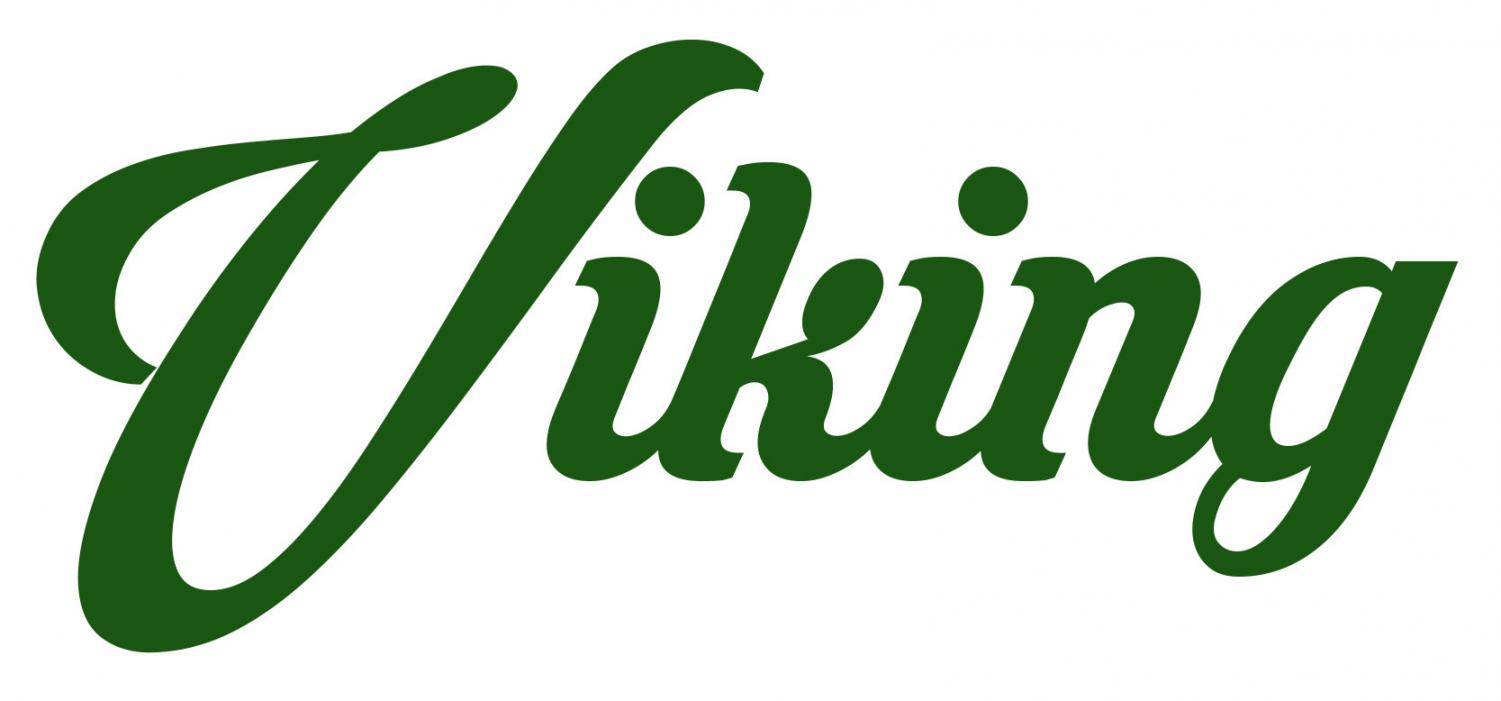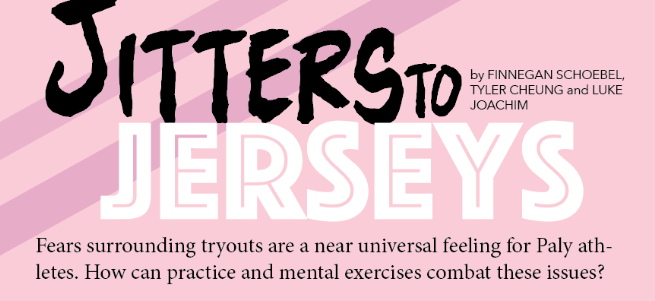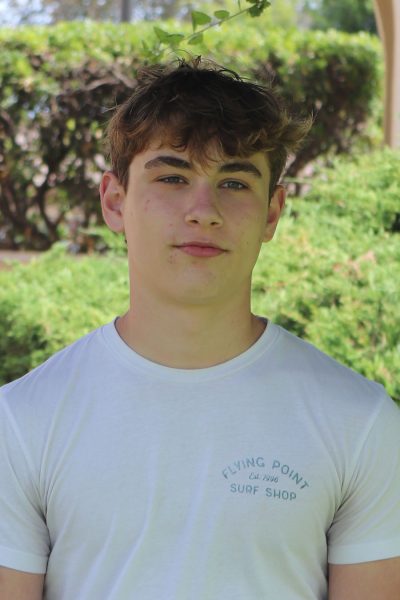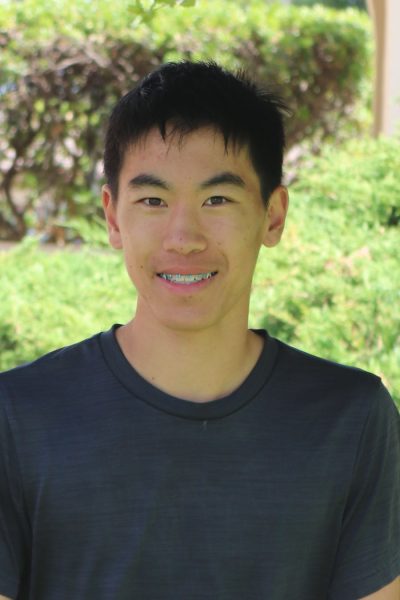Around fifty boys, ranging from freshmen to seniors, stand around Paly’s lacrosse field. Some stretch, talk with friends, or pass a ball, while others stand awkwardly in silence. The atmosphere is filled with mixed feelings of excitement and anxiety. For each of these athletes, the next three days will define their season, and possibly their sporting careers. It’s tryout season for Paly winter sports.
Tryouts are the stereotypical scary sporting event with every athlete asking the same question: will I be the next cut? Athletes are required to endure days or even weeks of grueling sessions, afraid that one or two missteps could completely derail their chances at getting onto the team.
So what are the best ways to manage these stresses? Many athletes put in extra work in the weeks or months leading up to tryouts in order to be at the top of their game. Whether playing club, working in the gym or spending extra time on drills, athletes will put in many extra hours in hopes of shining when the time comes.
For junior and basketball player Graham Vaughan, that extra practice came in the form of extra hours shooting baskets ahead of tryouts.
“I was spending hours everyday in the gym practicing, shooting baskets or doing drills, and I played some basketball outside of school as well, like AAU or with friends,” Vaughan said.
Adding on to the idea of playing in AAU, many athletes join club sports in order to keep themselves in shape and ready to play school sports. Club sports create an environment where players can play in competitive settings throughout the entire calendar year. In the case of junior Temuge Battamur, he joined Palo Alto Soccer Club, a private club soccer team that helped him prepare for the season.
“I go to practice three times a week with Palo Alto [Soccer Club],” Battamur said. “It’s helped me a lot in both my confidence and my abilities and makes me feel way more prepared for tryouts.”
However, the combination of school and club sports can lead to athletes being worn down by the time school season starts, and therefore not being able to perform to the best of their abilities during tryouts. For soccer player Oliver Payne (’26), this balance means being extra attentive to injuries.
“When it’s getting close to school season, I start adding a rest day here and there to make sure I’m fit,” Payne said.
Getting an injury before a tryout can be detrimental for players, especially if when making a first impression on the coach. Proving oneself after recovering from an injury can be very difficult, so it is important for athelets to always warm up and stretch properly leading up to tryouts.
Balancing sports and school is another layer of student athlete’s lives that increases stress. Going to practice after school everyday is already difficult, but rigorous academics can make it very exhausting to train extra everyday to earn a roster spot.
“High school [season] is really physically demanding, so it takes a lot of work to make sure that I’m ready,” Payne said.
For many athletes, learning what you can and cannot control is the most effective way to manage stress. You cannot control other players’ actions, coaches actions, or any of the conditions of the tryouts. However, you can control your effort, hustle, and attitude. If an athlete possesses qualities that reflect high effort, hustle, and a positive attitude, they can put themselves in the best position to make the team.
“I feel like when going into tryouts, the goal shouldn’t be to impress people as much as to put your best effort,” junior soccer player Naveen Narayanaswami said. “You should believe in yourself by being confident in what your best effort can do.”
Adding on to this, it can be very difficult for those multi-sport athletes to transition from different sports. Multi-sport athletes face unique challenges when switching sports. Each sport requires different skill sets, and it can be stressful for players to try out for a team in which they are out of practice. Junior Kacey Washington plays both football and basketball and has to transition his sports with no break in between.
“I’d say that football and basketball require two different sets of stamina,” Washington said. “Transitioning workloads from catching to shooting can be difficult, but I usually account for this by attending basketball open gyms about a week before tryouts.”
In addition to this, personal stresses are not the only factors that affect players before tryouts. Parents can put some high expectations on Paly athletes, causing prolonged stress both during the tryout period and the regular season. Athletes have a much closer relationship with their parents compared to teammates and coaches. This means parent pressure can have a greater impact on a player’s stress regarding tryouts.
Last spring season, junior Dylan Liao attended tryouts for both golf and swimming. His performance in tryouts would determine what sport he would play, adding on a new level of pressure.
“I was trying to get on the golf team last year because I had no desire to be on the swim team anymore at that point,” Liao said. “If I didn’t get on, my parents were going to force me to get on the swim team.”
At tryouts, every athlete’s goal is to impress the coach, but coaches don’t always have a neutral position going in. Through prior teams or relationships, many coaches build a biased impression of a player before entering tryouts. In fact, some athletes who participate in tryouts feel like their competitors get a free pass onto the team without actually going to tryouts. Last year, the JV basketball season started while football CCS was still going on. Some players were cut from the team because it was known that some of the football players were good enough to make the basketball team. When football CCS finished, a few players essentially automatically made it on the team with no tryout, purely because of their reputation. This appears unfair to some players who got cut. Junior Oscar Barillas Otsby was one of the non-football players who got cut from the team last year.
“I definitely feel like it was unfair how football players got a free spot on the roster without even trying out,” Barillas Otsby said.
Others feel like this bias from coaches isn’t necessarily bad, because the coaches impressions can be based on real performances in the past. If a coach has a positive impression of a player, it most likely means they are actually good at the sport.
“Some people do have an advantage for sure, but I feel like this could be good or bad because the coach knows who’s good and who’s bad,” Liao said.
Even though many coaches can be biased, many do a good job of remaining as neutral as possible. Narayanaswami explained that even though varsity soccer coach Luiz Lodino is his club coach, he is certain that he can remain fair and unbiased in his team selection.
“I don’t think anyone has an advantage going in even if they know the coach,” Narayanaswami said. “I know Luiz, of course, but I also know he is a very fair guy and will choose the best players for the team, whether he knows them or not.”
Most coaches try to mitigate these biases, but it can be difficult to filter out their inner conscious favoritism when evaluating players. This conscious bias from coaches can be unfair for new players and transfers who hope to make a good first impression.
Five year Junior Varsity Basketball Coach Brandon Byer feels that through experience, coaches should be able to accurately evaluate players without bias.
“I think any coach would not be telling you the truth if they told you that previous experiences of seeing players from previous seasons or in the off-season might not impact at least some of their decision-making,” Byer said. “For me, I go through a process of acknowledging these biases that I hold, over the course of tryouts, and self-reflecting on whether these previous conceptions are heavily impacting, semi-impacting, or hardly impacting my individual decision making processes.”
For all the stress felt by the athletes to perform, coaches are under just as much — if not more — pressure. Coaches need to distinguish between athletes after just a few hours watching them perform and build teams around players of all different levels and abilities, many of whom have never played with each other before.
Additionally, coaches need to try and choose athletes with the right personality traits to make sure team dynamic is the best it can be. Tryouts only recognize a small window of the lives and personalities of athletes that are much more diverse than what coaches see during tryouts. These challenges stress coaches greatly, as making the wrong choices could unfairly hurt kids, lose the respect of the team, or even derail an entire season. However, Byer feels that coaches can become better at managing these stressful situations overtime.
“Having conducted tryouts for five going on six years now, I actually do not stress anymore about having to make decisions with regards to who makes the team,” Byer said. “My assistant coach and I have clear criteria that we look for in student-athletes, during the tryout period, which presents things pretty clear to us as we move throughout this time frame.”
Even though certain coaches might be able to avoid the stress of tryouts and can grow accustomed to the challenges of selecting the right athletes, it is not the case for everyone. Many coaches struggle with the idea of being responsible for whether a kid makes or doesn’t make the team, and fears picking the wrong players — whether for skill or for personalities.
The pressure to perform leads to rising stress for athletes, many of whom experience dips in their performance due to the sometimes overwhelming stress. However, some coaches are used to recognizing and managing the stress of kids. For example, coach Byer reminds players to focus on being the best person they can be instead of being worried about their performance. This is because focusing on providing personal skill can cause people to hog the ball or be overly physical.
“How I handle the stress of kids during tryouts is to reiterate the message that you can only ‘control your controllables’,” Byer said. “The idea of this is that the focus for each person trying out should be on intangible things such as effort, attitude, communication, listening, body language, etc. These transcend multiple sports and frankly life in general.”
Even though tryouts are known to induce stress in both players and coaches, it is always important to remember that hard work and dedication will always show during tryouts, and while current form might just be temporary, class will always be permanent. When focusing on effort and attitude, athletes give themselves the best chance to succeed.






